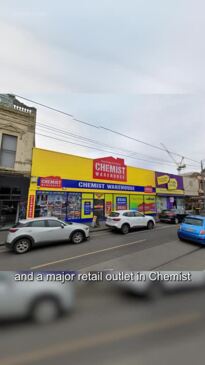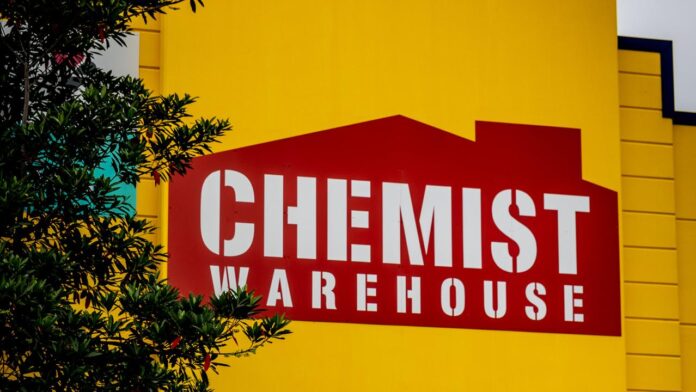[ad_1]
As the competition watchdog begins probing a planned mega merger between two pharmacy giants, critics warn Australian consumers could end up paying dearly for the move.
In December, it was announced Chemist Warehouse and Sigma Healthcare, which owns brands like Amcal and Discount Drug Store, would join forces to become one enormous $8.8 billion conglomerate.
The deal, currently being reviewed by the Australian Competition and Consumer Commission, would make the new entity “an unmatched pharmacy giant”, RMIT University associate professor of finance Angel Zhong said.
And both history and economic theory show that mergers like these can be a double-edged sword for consumers, Dr Zhong said.
If the mammoth deal is approved, she said it would “radically reshape the way Australians access medication and other health products”.
In a statement, a Chemist Warehouse spokesperson said: “Chemist Warehouse has built its business and its reputation on providing consumers with convenient access to quality products at the best possible prices. This will not change under the merger.”
Sigma was approached for comment for this story but did not respond.
Competition and patient care ‘risks’
When news of the proposed merger broke in December, the Pharmacy Guild of Australia warned of risks to “patient care, community pharmacy ownership and competition”.
“For many decades, the community pharmacy model has guaranteed patients access to vital and lifesaving medications without putting profit over patient care,” the Guild said in a statement.
“Fundamental to this outcome is pharmacist-owned community pharmacies combined with a limit on the number of community pharmacies owned, due to the duty of care and clinical governance responsibilities associated with medicines, medicine administration, counselling and patient care.”
It said that medicines should not be treated as “ordinary items of commerce” and said regulators should be wary of “increased corporatisation in the community pharmacy sector”.
The Guild’s Queensland president Chris Owen also expressed “major concerns” over the merger and called on governments to act to “preserve patients’ health ahead of profits”.
“It is not in the interest of patients, or their communities, to have community pharmacies that put shareholders first,” Mr Owen said.
“The language of those pushing this proposal is about a ‘unique opportunity” for ‘healthcare businesses’.”
In an analysis this week for The Conversation, Dr Zhong said mergers often increase business efficiency, scale, and bargaining power.
“These cost savings may translate into lower prices for consumers,” Dr Zhong explained.
“However, the decrease in competition brought about through a merger can allow companies to get away with charging higher prices, or even lowering the quality of their product offering.”
Should the ACCC approve the merger – which is really more a case of Chemist Warehouse acquiring Sigma and getting a backdoor listing on the ASX – the new entity would be “enormous”.
“Far bigger than any of its individual competitions,” Dr Zhong added.

Chemist Warehouse currently has more than 600 retail outlets across Australia while Sigma boasts some 1200 pharmacies aligned to it as a wholesaler.
Together, that would give the new entity a 26 per cent market share in Australia.
In the United States, analysis of mergers in the consumer packaged goods sector, including medications and other healthcare products, found there was a 1.5 per cent price increase on average, while the total volume of goods sold fell by 2.3 per cent.
Or, in essence, mergers led to higher prices for consumers and a reduced range to choose from.
“In Australia, tight regulation of prescription medications means there isn’t much leeway to increase prices for medicines covered under the Pharmaceutical Benefits Scheme,” Dr Zhong said.
“But Chemist Warehouse earns a whopping 67 per cent of its revenue from its non-prescription ‘front of store’ sales, compared to a rate of 27 per cent at other Australian pharmacies.
“This gives the giant a unique opportunity to capitalise on increased market power in the Australian context.”
There have long been calls to increase the level of competition in the pharmacies sector, with a Productivity Commission review conducted in 2014 warning current regulations hindered new players from entering the market.
The review warned that the Community Pharmacy Agreement stifles competition by imposing rigid location and ownership restrictions.
“This has largely prevented Australia following in the steps of the United States and Europe, where deregulation in this industry has allowed consumers to buy over-the-counter medicines in supermarkets and gas stations,” Dr Zhong pointed out.
“This merger stands to further weaken competition in an industry already held back by such restrictions.”
Concentration could cause competition to crumble
Many segments of the Australian business landscape are already highly concentrated, from banks and energy providers to supermarkets.
That high level of concentration, where markets are controlled by a small number of players, has been thrust into the spotlight in recent times amid a cost-of-living crisis.
“One way to assess market concentration is to measure the share of the market held by the top four companies,” Dr Zhong said.
Right now, the top four companies in the pharmacy space collectively control more than 50 per cent of the market.
That tight level of competition would deteriorate on the bank of the Chemist Warehouse and Sigma merger.
“As industry concentration has intensified across other sectors, many larger Australian corporations have been seen to increase their price mark-ups and suppress wage growth,” Dr Zhong said.
“If successful, this merger will further entrench the pharmacy sector among banks, supermarkets and petrol retailers in the ranks of the most concentrated Australian industries.”
A ‘masterful’ business move
From humble beginnings in suburban Melbourne, Chemist Warehouse has become a retail giant and has been dubbed “the Bunnings of pharmacies”.
“It has established a strong retail presence nationally, with franchise outlets stocking not only prescription and over-the-counter medicines, but also a huge range of other health products such as vitamins, cosmetics and toiletries,” Dr Zhong explained.
Sigma owns a number of pharmacy brands, including Amcal, Guardian, PharmaSave and Discount Drug Store.
However, it’s also one of the three biggest pharmaceutical wholesalers in the country and has an extensive customer base.
“This merger is a masterful blend of two business strategies,” Dr Zhong said.
She said the first is vertical integration, or buying part of the supply chain, and horizontal integration, which is purchasing a competing business.
“The new entity will be able to independently source and sell its own products, fully controlling its own ecosystem of wholesale, distribution and retail pharmacies.”
But first, the deal needs to successfully navigate a few hurdles.
First, it must be approved by shareholders of both companies, although the early sentiment indicates that might not be too difficult.
Then it must get the green light from the ACCC, which ends its public consultation period today and will now move on to a formal review.
It’s due to announce its decision on June 13.
[ad_2]
Source link


